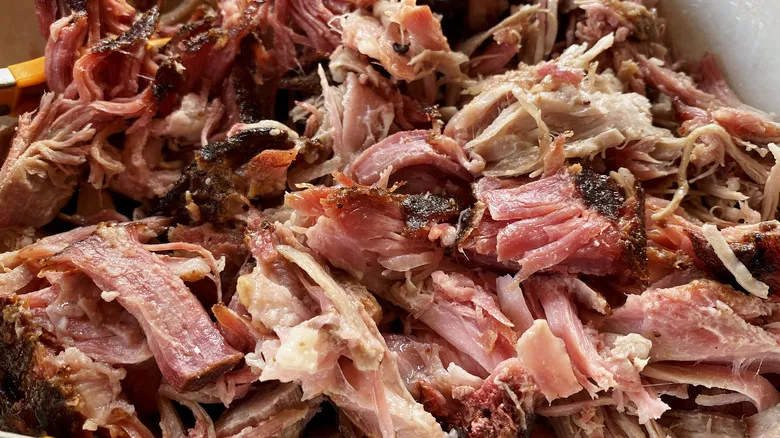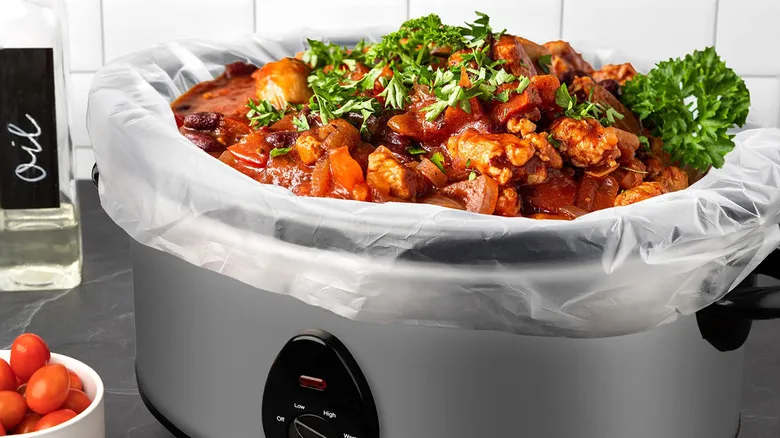Storing your pulled pork the right way

The biggest mistake when reheating pulled pork is ending up with a dry result. No one wants to bite into what tastes like barbeque sauce-flavored cardboard. To prevent this, it's crucial to store the meat properly and retain its juices. While a plastic container may seem sufficient, the juices can escape, and getting them back in is challenging. For optimal results, consider investing in a vacuum sealer, which will help keep all the moisture sealed in until you're ready to reheat.
When storing pork, the best way to maintain its moisture is to avoid pulling it apart until you're ready to eat. If you can vacuum seal the pork while it's still whole, that's ideal. However, if that's not feasible, don't worry—this method still works well with pre-pulled pork. It also allows you to portion it out easily, so you only need to reheat what you plan to eat. Once the pork is sealed, you can store it in the fridge for up to 3-4 days or in the freezer for 2-3 months.
The right way to reheat your pulled pork
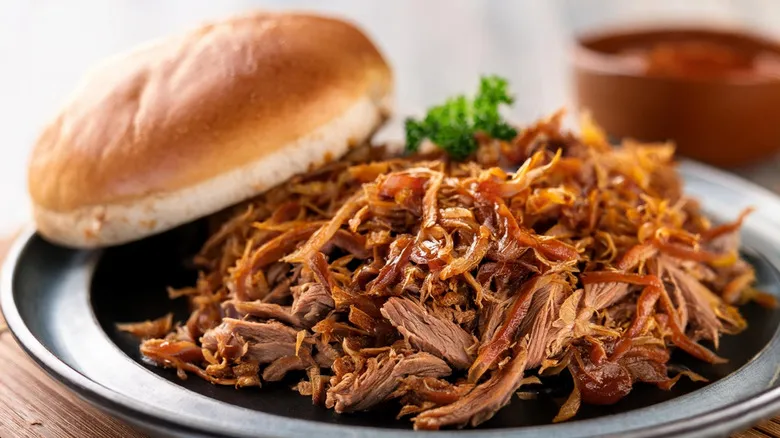
To reheat your vacuum-sealed pulled pork, it's best to steer clear of traditional heating methods. Skip the microwave and oven, as both can dry out the meat and require you to remove it from the bag, causing you to lose some of that valuable juice before warming it up. Instead, you should heat the pulled pork while it's still sealed in the bag.
The ideal solution for this is a sous vide. If you have an immersion circulator, it will be your greatest ally in this process. Just submerge the sealed bag of pulled pork in the water, set the circulator, and return when it's done. The meat you retrieve will be steaming, juicy, and hot, as if it were freshly cooked for the first time.
Reheating pulled pork without a vacuum sealer or immersion circulator

It's great to be aware of the best practices, but what if you only want to reheat pulled pork occasionally and don't have any other use for a vacuum sealer or immersion circulator? While both can be relatively inexpensive, it's still an expense you might prefer to avoid, and they could add unnecessary clutter to your kitchen. Fortunately, there are alternatives.
If you're looking to sous vide without a vacuum sealer, you can use plastic freezer bags instead. Just try to remove as much air as you can. The basic concept remains the same: it may not be as flawless as using a vacuum sealer, but it will work. If you lack an immersion circulator, check if any of your other appliances have sous vide capabilities and follow the instructions for that device (you might be surprised by the settings on your Instant Pot). If that doesn't work, you can simply use a pot of hot water kept at a low temperature.
Recommended
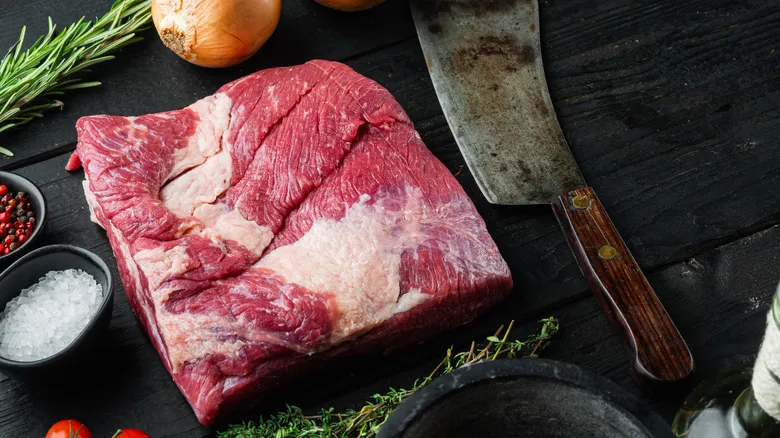
Can Someone Explain What A Deckle Of Beef Means?

Grilled Fruit Kabobs Are The Only Way We Want To Eat Fruit Salad

Here's How To Put A Mediterranean Spin On A Classic Hamburger
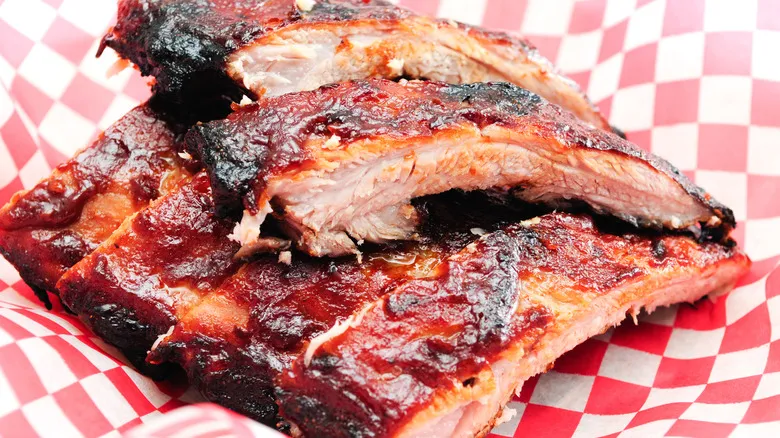
What Temperature Should Ribs Be Cooked To?
Next up

